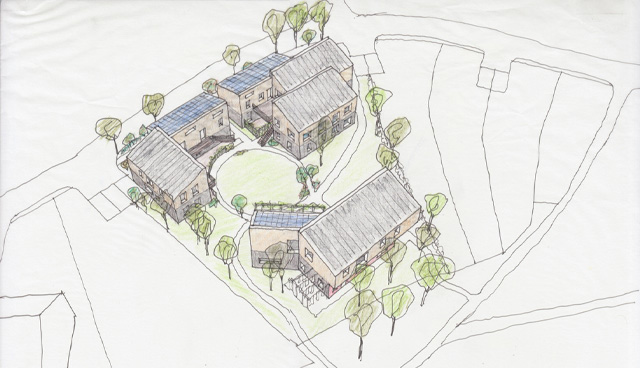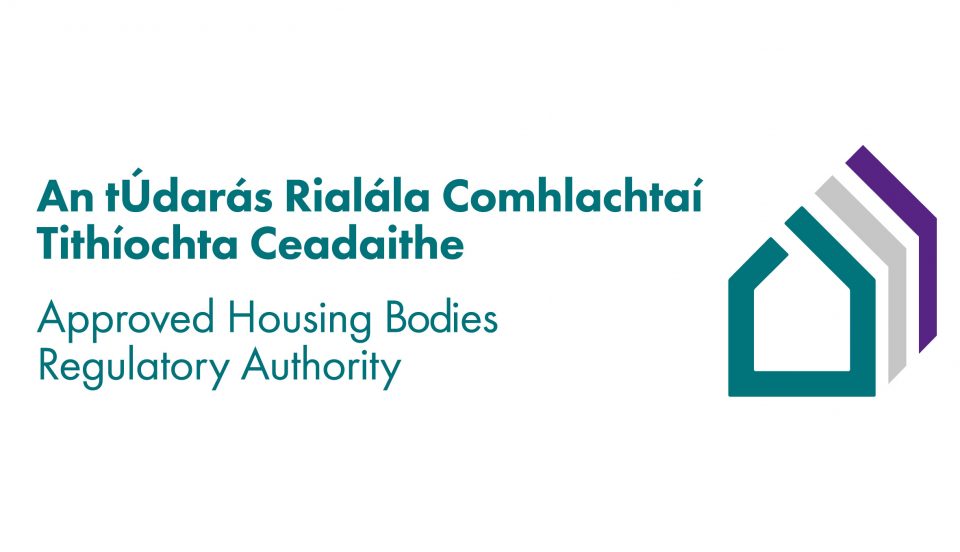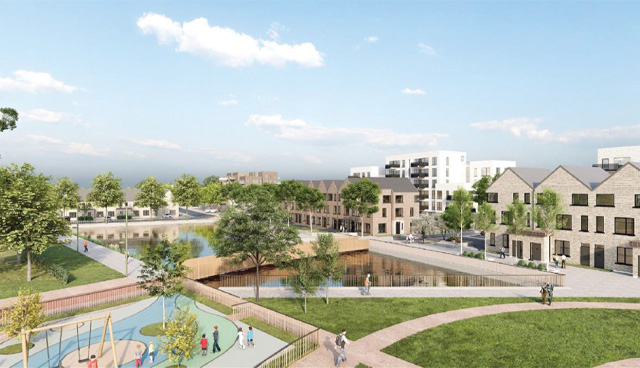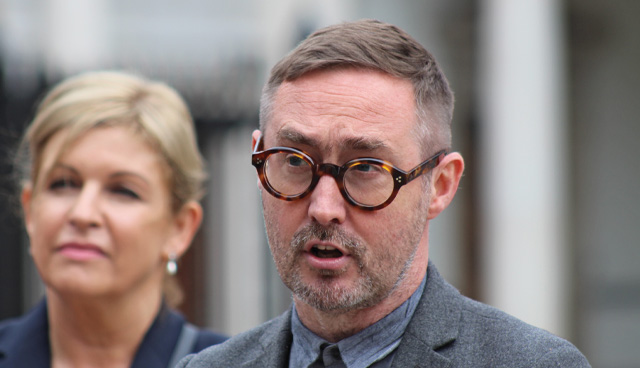
Eoin Ó Broin TD: A paradigm shift
1st June 2021
Ageing in place
1st June 2021Time to think beyond the house: A critical response to the climate and biodiversity crises
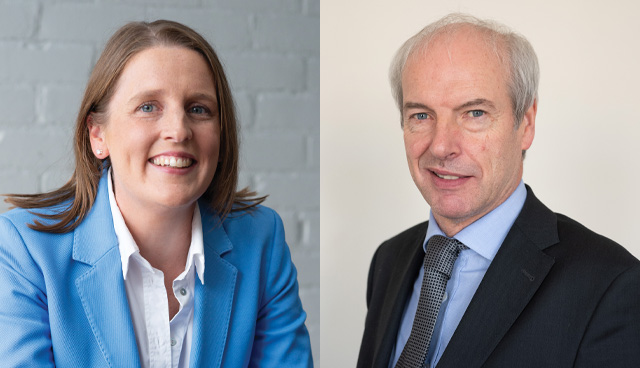
Aoife Corcoran and John O'Connor
Covid-19 required radical action, but our climate and biodiversity emergencies need us to make long-term change to our lives to ensure sustainable futures for all, write Aoife Corcoran, Sustainability Advisor, and John O’Connor, Chief Executive Officer, The Housing Agency.
Are the houses and communities we build now equipped for the long term? The climate and biodiversity crises threaten our very way of life, as well as the lives of future generations. We need to put action on climate and biodiversity at the heart of every decision we make in relation to housing and sustainable communities.
For years, experts have looked to our homes as a way in which we can make meaningful change. However, climate action should and must go beyond retrofitting and reducing energy consumption in our houses. A wider community approach that goes beyond the house and recognises the profound connection between housing, the economy, society, and the environment is required.
This approach is framed by Ireland’s obligations under international treaties such as the Paris Agreement, EU policies on climate action, the National Climate Action Plan and the newly published Climate Action and Low Carbon Development (Amendment) Bill 2021 which is currently going through the Oireachtas. Ireland’s target is to cut greenhouse gas emissions by at least 55 per cent by 2030 and become a ‘climate resilient, biodiversity rich, environmentally sustainable and climate neutral economy’ by 2050.
Understanding the problem
The first step in making meaningful change is to understand the problem which needs to be addressed. Buildings are responsible for about 40 per cent of the EU’s total energy consumption, and for 36 per cent of its greenhouse gas emissions from energy. Housing currently accounts for 10.9 per cent of national greenhouse gas emissions.
Ireland has consistently been among the highest producers of greenhouse gas emissions from household heating and cooling activities. Our emissions level is 1.8 times that of the EU average, substantially higher than comparable levels in other northern European countries.
The way we heat our homes in the face of a climate crisis is a significant challenge for Ireland. Increasing public demand for affordable housing, as well as an ageing housing stock and a dispersed population, make it more difficult for many to transition to more sustainable heating sources.
Putting climate at the heart of housing
We have the means to limit climate change and build a more prosperous, sustainable future. Recognising the need for the housing sector to reduce carbon emissions, the question is ‘What can we do?’.
We now have a responsibility to incorporate climate action in all the strands of housing policy. We need to embrace the contribution that sustainable housing can make to achieving a range of policy goals, including objectives of the National Planning Framework, reducing energy and transport poverty, and improving biodiversity.
Carbon emissions in the Irish housing sector come from:
- Housing provision: in 2020, there were 21,000 new dwelling completions and around 19,000 are likely for 2021.
11 per cent of emissions come from embodied carbon, or ‘upfront’ carbon, associated with construction materials and process throughout the building lifecycle. - Household management: current housing stock is around two million homes.
Greenhouse gas emissions – ‘operational carbon’ – from household heating activities in Ireland have been among the highest in the EU for the last 10 years. - Housing demolition: housing obsolescence in Ireland varies by location, and time period, but is currently estimated to be between 0.2 per cent and 0.3 per cent.
End of life carbon emissions from the housing sector in Ireland have not been calculated to date. However, carbon emissions associated with the demolition, transport from site, waste processing, and disposal phases of a building are acknowledged as contributing to Ireland’s greenhouse gas emissions.
Our actions also need to be led by the UN Sustainable Development Goals, Geneva UN Charter on Sustainable Housing, the European Green Deal, and Ireland’s National Climate Action Plan to ensure that housing will be put on a more resilient and sustainable path.
Five key areas of climate action for housing are:
- building resilient and sustainable communities focused on high density, highly connected, good quality homes;
- the rapid roll-out of retrofitting and energy efficiency measures;
- embracing the circular economy in all elements of housing provision;
- designing and managing housing for biodiversity; and
- thinking beyond the four walls of the homes.
Resilient and sustainable communities
Building resilient and sustainable communities must be at the forefront of everything we do in the housing sector to address the climate crisis and biodiversity crisis. Housing should be planned, constructed, and managed with the recognition of the profound connection between housing, the economy, society and the environment.
Key to sustainable housing and communities is the issue of density and compact growth. In 2017, transport accounted for almost one-fifth of Ireland’s greenhouse gas emissions. While more remote working post-pandemic may have some positive effects, it alone is not enough to offset the major impact that long commutes have on our country’s carbon footprint. Reducing our reliance on private cars by locating homes close to public transport and essential amenities, where active modes of transport are facilitated will improve quality of life while contributing to a sustainable future.
How Ireland can create resilient and sustainable communities:
- Think beyond the housing estate and deliver a variety of good quality housing options in towns, villages and cities supported by proper infrastructure.
- Co-create good places for people to live and work, with convenient and connected infrastructure, appropriate access to green space, and economic opportunities.
- Ensure that viable public transport options are available, and active modes of travel are facilitated eliminating the need for cars for many.
Provision of a range of housing options focused on higher density and good quality, coupled with the facilities and infrastructure residents require in their daily lives, can lead to the regeneration of existing villages and towns to places with a better, more climate-friendly quality of life. Empowering communities, providing good walking and cycling infrastructure and prioritising developments that are close to public transport, shops, schools and other services, are all actions we in the housing sector can take to help create more sustainable areas.
Energy efficiency and retrofitting
Energy efficiency and retrofitting has become the main policy response to reducing CO2 emissions from buildings across the globe. Ireland has ambitious targets in this area. In order to reduce emissions in line with national and international targets, Ireland’s building stock will need to be highly energy efficient and largely decarbonised by 2050.
This will mean ensuring that new developments are built to at least a nearly zero-energy building (NZEB) standard, and the retrofitting of the majority of existing buildings.
As set out in the National Climate Action Plan, one of the key measures to achieve GHG emission reductions and a net zero target in Ireland by 2050 is to retrofit all homes with insulation to a Building Energy Rating (BER) of at least B2. This commitment is reiterated in the 2020 Programme for Government and will be achieved through the Long-Term Renovation Strategy.
Ireland’s Climate Action Plan has set out a detailed roadmap for the period 2021 to 2030 with the objective of reducing CO2 equivalent emissions from the built environment by 40 per cent to 45 per cent.
Achieving this target will require retrofitting 500,000 homes to a BER level of B2 or cost optimal equivalent or carbon equivalent; and local authorities upgrading their housing stock under Phase 2 of the social housing retrofit programme to bring dwellings to the same minimum level. Ireland now needs to rapidly progress with meeting these targets across all tenures of the housing sector.
Circular economy
Carbon emissions associated with the demolition, transport from site, waste processing, and disposal phases of a building are acknowledged as contributing to Ireland’s greenhouse gas emissions.
Construction and demolition waste accounts for over five million tonnes of waste annually. 80 per cent of the construction and demolition waste is soil and stone and 20 per cent concrete, brick, tiles, metal, glass, wood, plastic, and metal.
As outlined in the Waste Action Plan for a Circular Economy published in 2020, it is imperative that prevention and reuse is hardwired into construction activity within the housing sector. To do this the housing sector needs to embrace a circular economy approach to construction and demolition whereby:
- waste and resource use are minimised;
- the value of products and materials is maintained for as long as possible through good design, durability, and repair; and
- when a product has reached the end of its life, its parts are used again and again to create further useful products.
Biodiversity
In addition to climate, we also have a biodiversity crisis. A global decline in biodiversity puts the very foundation of human existence at risk because this loss is irreversible. The housing sector has a significant influence on the diversity of ecosystems which exist within our local environments. Therefore, our actions need to encourage positive steps towards creating, maintaining, and increasing biodiversity both on buildings themselves and in their environments. Positive steps we can take now include:
- embedding nature-based solutions into our new and existing housing stock;
- developing and implementing a biodiversity strategy which expands upon the commitments as set out in the current Programme for Government, which includes the establishment of a Citizens’ Assembly on biodiversity; and
- embracing the All-Ireland Pollinator Plan 2021–2025, a roadmap that aims to help bees, other pollinating insects, and our wider biodiversity. The plan contains 186 actions aimed at making private, public and farmland more pollinator friendly, conserving rare pollinators and developing an all-Ireland honeybee strategy.
Future opportunities
The Covid-19 pandemic changed all our daily lives. The crisis required ambitious and urgent action to be taken to save lives. That same level of ambition and urgency is now required to deal with a climate and biodiversity crises that, if not addressed, will lead to the destruction of communities and ecosystems here and around the world.
Already, countries across the world have felt the effects of climate change and, for Ireland, that impact has often been devastating, from severe flooding to life-threatening storms. The biodiversity crisis has left Ireland with one in every five species is threatened with extinction.
Case Study: Cloughjordan Co-Housing
In Tipperary, Cloughjordan Co-Housing CLG is prototyping a ‘Climate-Smart Pocket Neighbourhood’. A total of 20 homes are being developed as part of the project, which it is hoped will be completed in 2023.
Cloughjordan Co-Housing will use permaculture design, energy efficiency and smart technologies to mitigate the effects of climate change and provide a safe and healthy environment for its residents. The area will comprise a range of homes, from studio apartments to family houses, as well as shared green areas and workspaces, built using ecological and recycled materials.
This will link community benefits with health, solidarity, and climate action. The project is to be located within Cloughjordan Ecovillage near WeCreate, the community enterprise centre where the group is based.
The group aims to demonstrate a model of collective ownership, which will suit people who seek a stronger sense of place, and a more supportive and sustainable place to live. Cloughjordan Co-Housing features in the publication series Roadmapping a viable Community-Led Housing Sector for Ireland, by SOA Research CLG. You can read the series at soa.ie.
The threat of rising temperatures and even more devastating weather events in the coming years present a huge challenge to which the world must rise. Ireland has a responsibility to play its part. Indeed, as a relatively prosperous nation, we can take on a leading role in this climate revolution.
As with each crisis there are opportunities. Covid-19 has refocused us on the values of good quality housing, access to nature and green space, and the importance of building communities where people can live, work, access services within walking distance of their homes. By expanding our efforts in these areas, we can be leaders in addressing the climate crisis.
The Housing Agency is a state agency whose role is to promote the supply of housing to meet current and future housing needs and demand. It does this by building expertise and expert knowledge on housing, supporting housing policy development and implementing effective housing programmes in collaboration with others.
T: 01 656 4100
E: info@housingagency.ie
W: www.housingagency.ie

